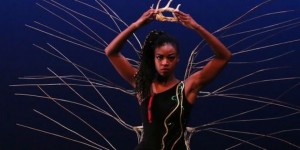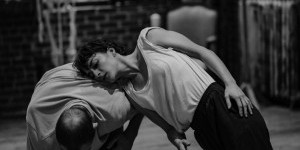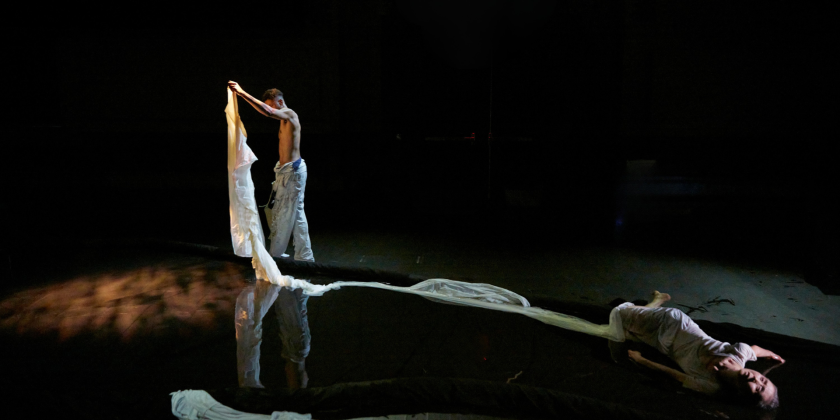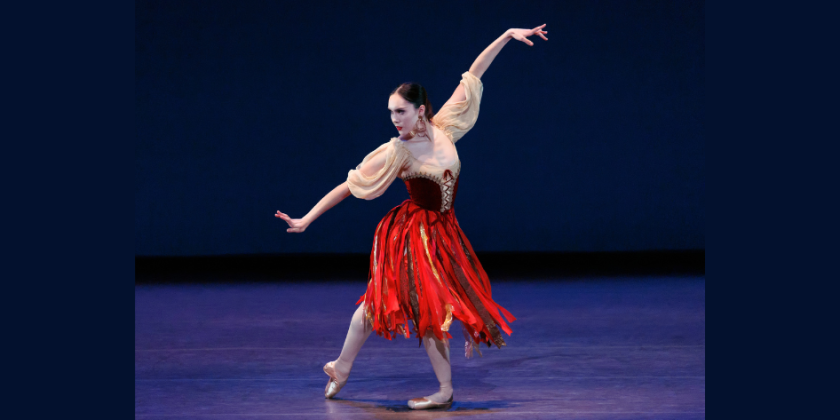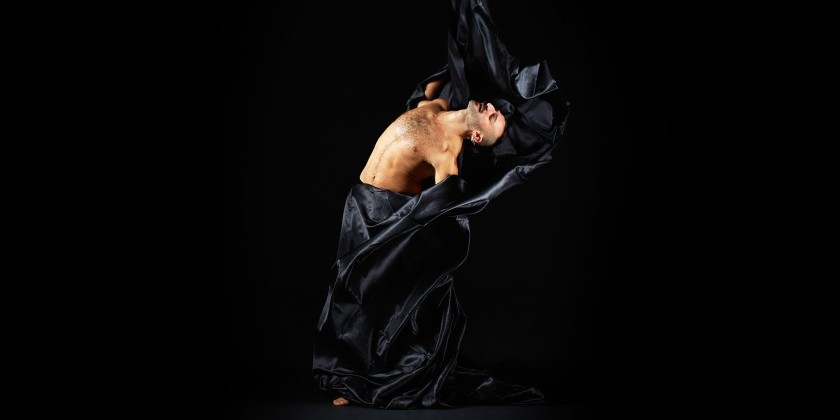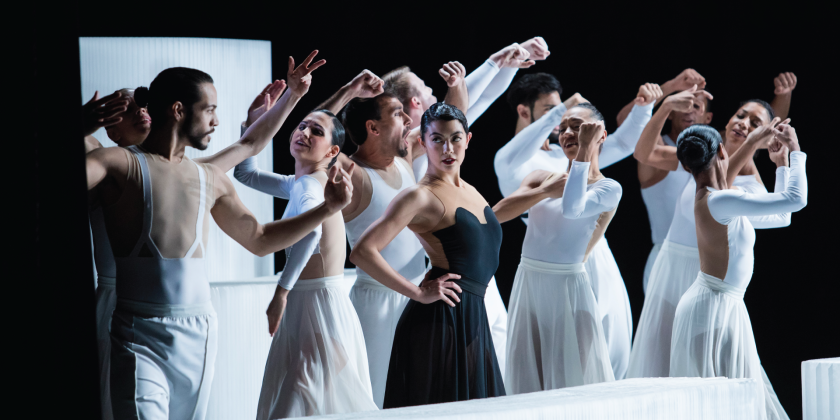IMPRESSIONS: Annie Rigney’s “Quis Est” at the Ace Hotel
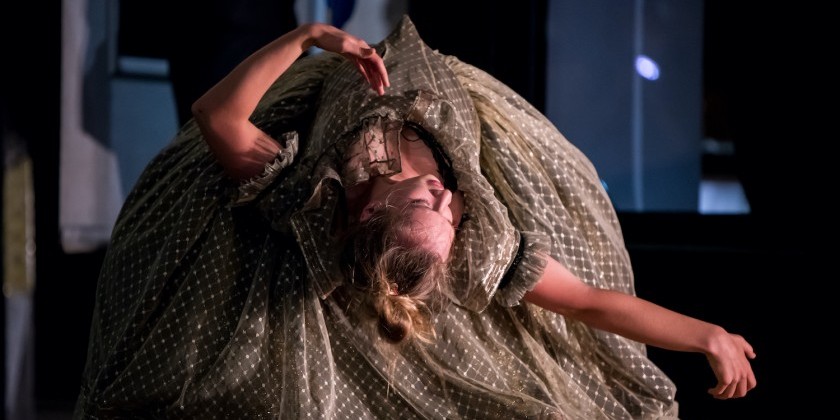
Presentation: CreateART at the Ace Hotel
Choreography: Annie Rigney
Performance: Madison Doyle and Raechelle Manalo
Musicians: Cassandra Douglas and Kyle Walker
September 24th at 7:30 p.m.
It’s fall in New York City, and while the temperate breezes and sea of light jackets carry fond memories of autumns past, currents of unease careen through the air. In the wake of months of civil unrest and a pandemic that has nearly emptied out parts of the city, an urban ballet that Jane Jacobs could have only dreamed of emerges on the corner of Broadway and 29th Street. As bikes whiz by in their protected lane and businessmen swerve to avoid servers carrying trays of colorful cocktails to alfresco diners, vibrant, whirling bodies coexist in an unlikely harmony. Within this swirl of chance interactions, a small crowd — safely distanced, some seated at tables and some standing — coalesces to witness a choreographer reimagine dance-making in the COVID-19 world.
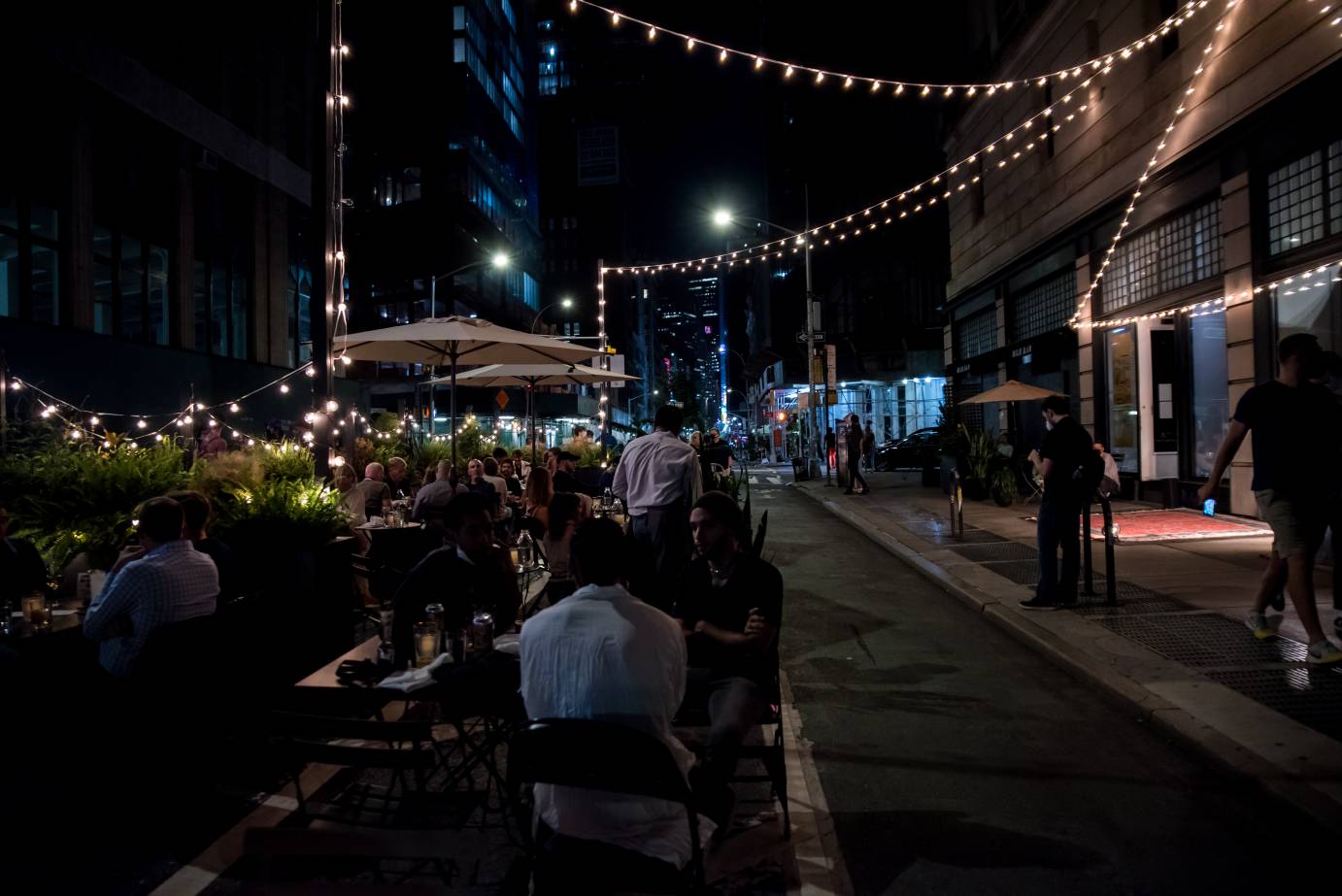
Annie Rigney’s Quis Est opens with two dancers, Madison Doyle and Raechelle Manalo, slightly elevated in two adjacent windows of the Ace Hotel’s Breslin Patio, like mannequins in a department store display. The women wear 18th-century ball gowns, with tight waists and hoop skirts as a solo piano score performed live by Kyle Walker evokes eras past. A busy bike lane serves as a sort of fourth wall, delineating performance space from audience.
The duo configures their arms as if holding an imaginary dance partner, two puzzle pieces waiting to be assembled. They move in unison with gestures that begin small and develop to explore the boundaries of their socially distanced performance spaces. Rope-like fabric hangs from the top corner of both boxes, and the women grab it with each hand: resisting, leaning into, pulling away from it. They wrap it around their bodies, binding themselves.
%20(1).jpg)
Their movements start to differ from one another, drawing from vocabularies both classical and urban. As their actions escalate in speed and intensity, the city spins around us in the same chaotic harmony. People videotape on their phones as they walk by.
Manalo fetches Doyle, and they wrap around one another in a melding of fabric and limbs. Quis Est was originally a solo for a BFA candidate at SUNY Purchase’s Conservatory of Dance, and in this reconstructed version, the two women seem like parts of the same person.
Manalo disappears, and Doyle pauses with two hands pressed against the window in a stiff, doll-like gesture of desperation. She walks outside, positioning herself on a burgundy rug on the sidewalk. The beautiful Cassandra Douglas, clad in a white gown with a headpiece of cascading jewels, sings “Stabat Mater: 5. Quis est homo” (Giovanni Battista Pergolesi).
.jpg)
As Doyle stands planted, her two feet firmly on the ground, the gestures through her arms and torso intensify, matching Douglas’ operatic notes. She extends her arms forward, as though driving a car, while rolling her torso hypnotically. As the movement builds, she backbends over the gown’s massive hoop, her body so contorted it becomes difficult to tell which way her torso is oriented in relation to her legs. The duration of this backbend matches Douglas’s extended notes.
Rigney danced with the Israeli company Inbal Pinto for several years, in addition to apprenticing with Ohad Naharin’s Batsheva Dance Company, and the influence of Naharin’s Gaga technique is evident — movement driven by sensory experience. As her motions become more extreme, Doyle’s body appears to be wrenched by outside forces, waves or strong gusts of wind. This effect of displaced body parts is shocking and sometimes even funny in a heightened emotionality that occasionally spills over into comedy. Someone passing by bellows, “What the fuck is going on?”
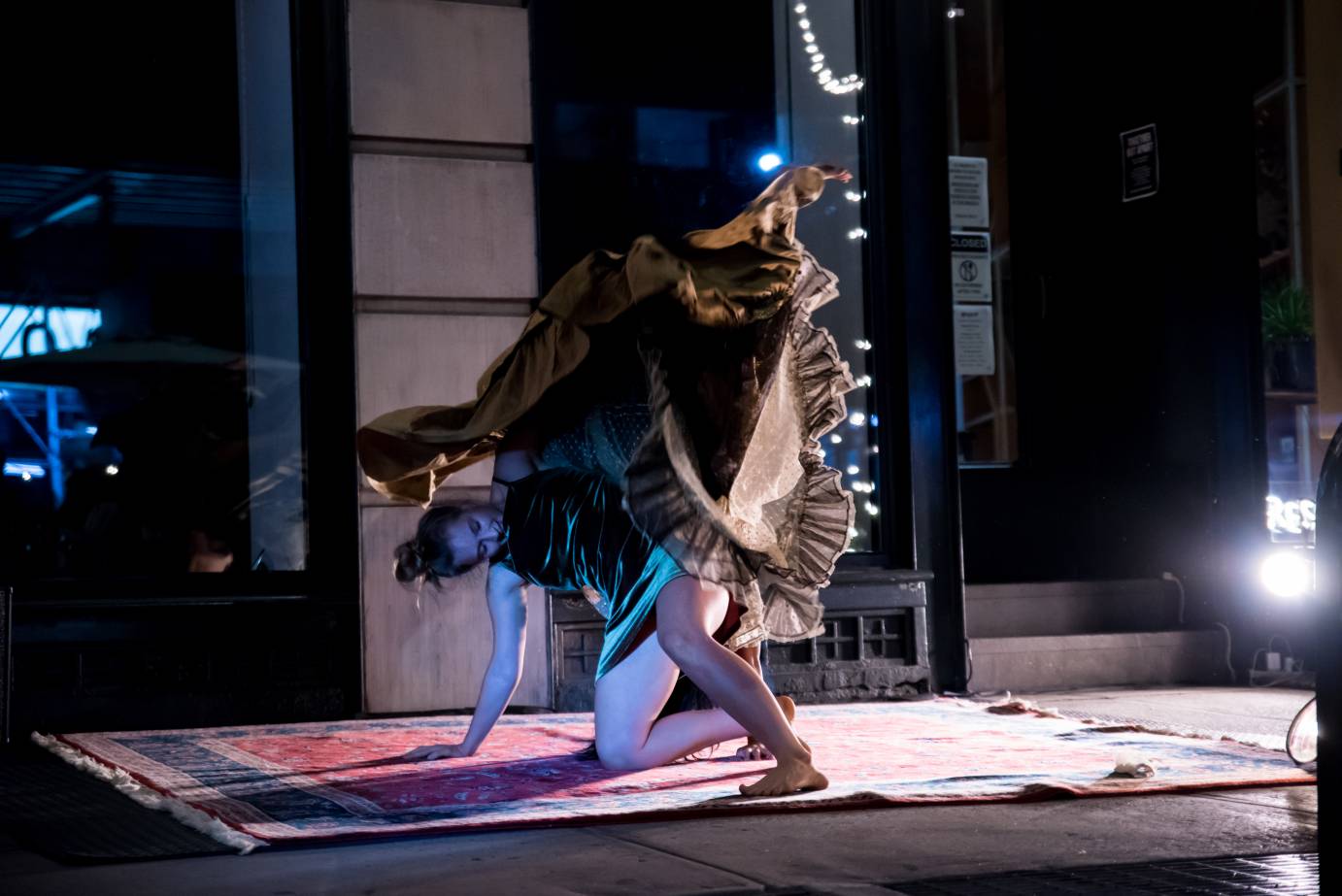
Doyle wriggles out of the costume. In an absurd moment, the discarded dress shifts and hiccups, as if concealing a small animal. Slowly the amorphous pile of fabric takes on a life of its own as it transforms into a human. As though still trying out her new body, Manalo struggles to stand — a conclusion that reveals how Doyle was able to achieve these moments of superhuman strength and flexibility. As the roughly 30-minute piece closes, dancers and choreographer bow, and Douglas leads us in the African-American spiritual “He’s Got The Whole World in His Hands” to honor the late Breonna Taylor (it would have been lovely to hear this sung from the woman’s perspective).
In this catastrophic moment in time, the presentation of art feels quite minor. Yet it registers as a signal of astounding significance — can art be part of the city’s revitalization? Just like happening upon an outdoor dance performance on an autumn evening in the New York City that many have claimed to be “dead,” the magical moments inside of Quis Est make us question our own understanding of how the world works. Rigney’s work is both a fantastical escape and an emotional catharsis when it is desperately needed.




